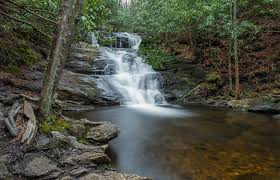
Change is in the air. The temperature has dropped, children grab
their school supplies and hurry out the door in the morning, and most people
have established routines that work for them. People deal with difficulties in different
ways. During the weeks and then months of quarantine, some people baked bread,
others did puzzles, and many finally stopped putting off organizing their
closets. (Some individuals were happy to discover bread recipes among their
papers and puzzles they had forgotten having bought buried in the bottom of
their closets. Organizing does have its rewards.) To the animals, the cooler
temperature signals that their lives need some serious adjustments as well. When
the canopy of leaves changes from green to gold, the animals, birds, and
insects know it’s almost time: Winter is coming, and they have to be prepared
to survive.
Squirreling Away Food
Without closets to go through, animals are nevertheless
extremely busy with their final preparations for the approaching winter months.
Some, such as squirrels, are confident that the caches of food they carefully
prepared over the summer will be enough to see them safely through the freezing
winter when food is scarce. For months, they have been collecting food and
storing it where it will be accessible. Research has uncovered that the
squirrels don’t just bury their nuts randomly; rather, they practice “scatter
hoarding,” burying their food in hundreds of different locations. They have
even been known to dig holes, leave them empty, and then cover them back up to
fool other squirrels who might be watching.
Not only that, but they group the
nuts according to preference and choose to bury the most valuable ones in the
most open areas. In this way, other squirrels are discouraged from helping
themselves to food that doesn’t belong to them since, in the open, they are
more vulnerable to predators and won’t risk the free meal. Of course, the
squirrel who buried them there is also in danger while burying and recovering
them but considers the risk a worthwhile investment for its hard work. If you
think of your neighborhood as a huge, underground closet for a squirrel,
perhaps they have been spending these months organizing after all.
Bee-ing Warm
Similar to squirrels, honey bees are active all winter (unlike
most bees and wasps, which die off except for their hibernating queens),
relying on food that they stored before the season changed. They have an
additional challenge, though: being cold-blooded, they can’t simply grow a
thicker coat of fur to keep out the cold. Instead, they burrow deep within
their hives and cluster together for warmth. Honey bees are able to maintain
the internal temperature of their hive at over 90 degrees by vibrating their
muscles and forming a tight cluster around their queen. In this way, they pass
the coldest months content, eating the honey they stored until the spring sun
shines again.
Oh, Deer
Some animals, such as deer, don’t do anything in particular to
prepare for winter’s icy grip as their food supply of twigs, stems, and other
plants is still available in the colder months. The do grow a thicker coat,
which absorbs more sunlight and traps more heat than their summer coat. They do
purposely overeat in the summer in order to add layers of insulating fat under
their skin. They also produce oils from glands in their skin that make their
hair water repellent, which helps them stay warm and survive outdoors in the
snow and freezing rain.
Female deer, called “does,” often travel
in groups during the winter, foraging for food together. Their fawns stay with
them through the winter, as well. To find enough food, they are able to jump
over seven-foot tall fences from a standing position, so it is not so easy to
keep them out of your yard. They adjust to harsh winters by slowing their
metabolism, sometimes by half, which enables them to save energy and eat less. They
also use the energy that they stored in their body as fat when food was
plentiful.
What’s Good for the
Geese?
Some creatures, such as the Canada goose, turn their noses (or
rather, their beaks) up at the whole thing and just leave. Hundreds, sometimes
thousands, of feet above our heads, the
With their familiar brown body, black
neck, and white chinstrap, over 300,000 of these easily identifiable birds make
their home in
It is important to note that there
are some Canadian Canada geese and some American Canada geese. If that is not
confusing enough, many
The northern
Why the “V” formation? It’s about
aerodynamics. The goose in the lead provides flight assistance to the birds
that follow. As each goose flaps its wings, it creates an updraft of air that
reduces the air resistance behind it. The lead goose does the most work,
trailblazing a path through the air. Scientists have estimated that
Another benefit to flying in the “V”
formation is that each bird can easily see all the other members in the group,
called a “skein” in flight. (The group is called a “gaggle” while on the
ground.) If one bird becomes weak or sick, two more birds will leave the
formation and follow it to the ground. They will help and protect the weak
goose until it has sufficiently regained its strength. Only then will they
rejoin their group together.
Perhaps the next time you hear the
clear “honking” of the
With a little foresight and planning,
working together and helping one another will help us all weather the winter
cold, creating our own warmth and comfort during these changing times.
Debbie Glazer lives in






